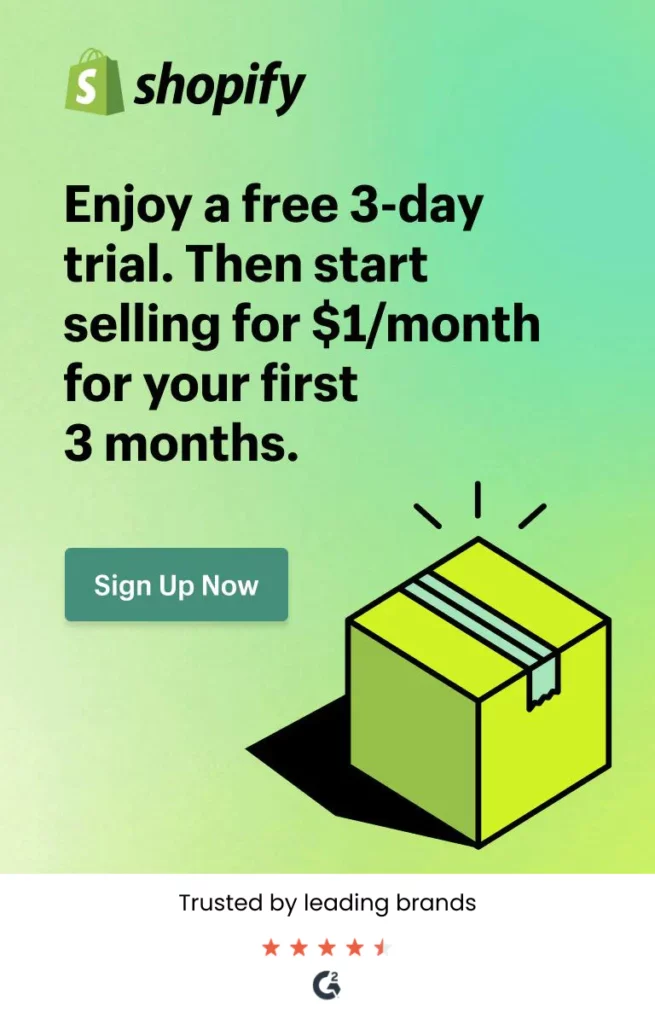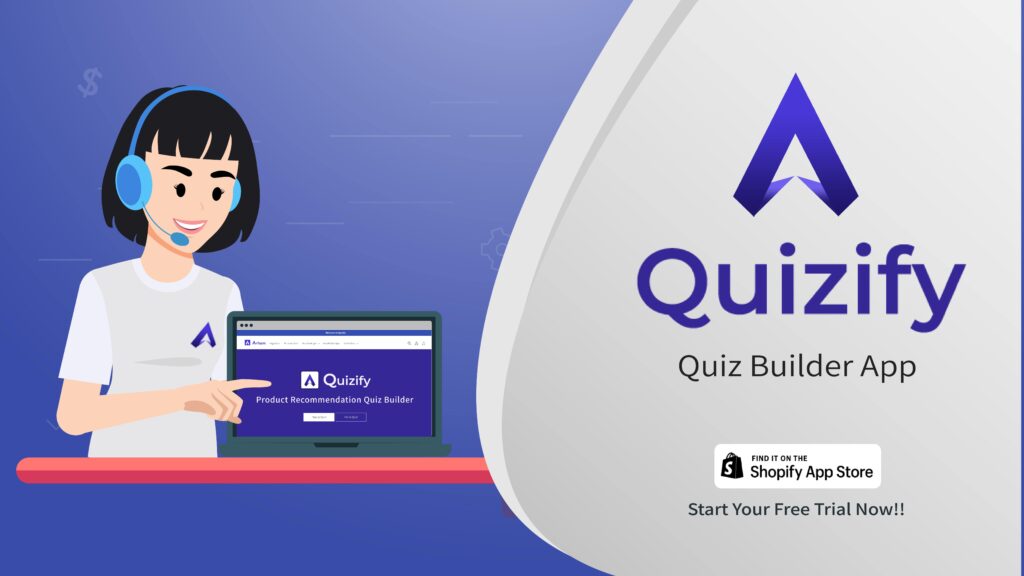
Learn how to create Shopify quizzes that drive sales and capture
customer data with personalized product recommendations.
Over 1.7 million businesses in 175 countries use Shopify to power their online stores, and a growing number of those Shopify merchants use product recommendation quizzes
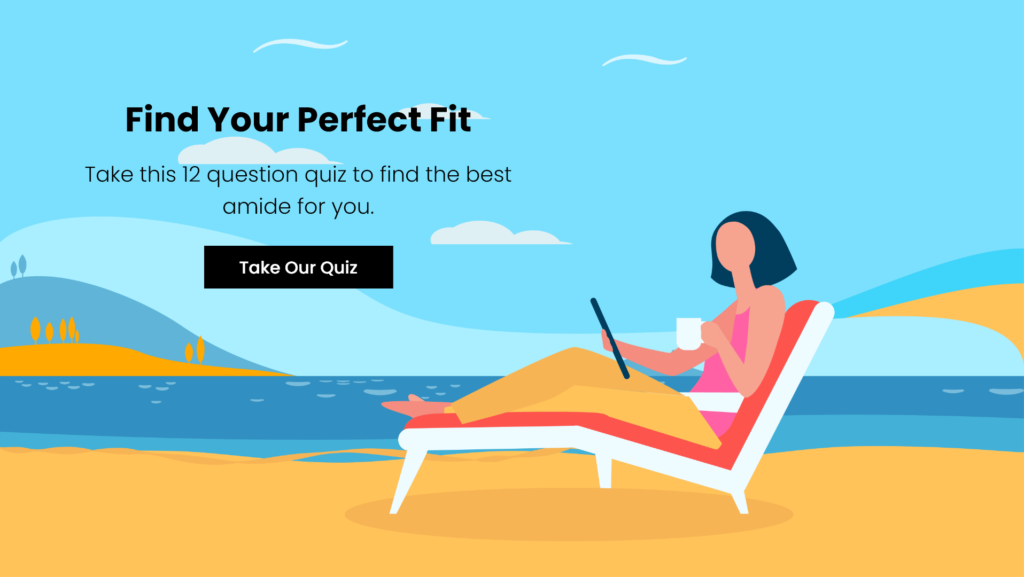
Why Shopify Quizzes?
If you’re here, odds are, you’re thinking about adding a quiz to your Shopify site. Great idea; there are plenty of good reasons to use product recommendation quizzes!
But maybe you’re not convinced yet.
If the sheer popularity of eCommerce quizzes hasn’t swayed you, here are a few more reasons to jump on the Quizify: Quiz builder
- Quizify: Quiz builder helps you grow your list quickly. Capturing new visitors’ email addresses allows you to identify new shoppers and gives you a direct channel to market to them. By offering product recommendations in exchange for an email address (or mobile number), you can grow your lists in a way that provides value to new subscribers.
- Personalized product recommendations enhance the customer experience. As eCommerce continues to grow, brands must find ways to differentiate themselves. One way to stand out is with a standout customer experience. Shopify quizzes can help you personalize the shopping experience for your site visitors, helping you educate new visitors and turn more of those visitors into customers.
- They allow you to learn about your visitors.With third-party data on the way out, it’s important to collect first-party data and declared data from your visitors. Fortunately, quizzes can provide plenty of preference data that gives you a clearer picture of each potential customer. By passing this quiz data to your ESP (email service providers) or CDP (customer data platforms), you can also follow up with targeted promotions for the products each shopper prefers.
The bottom line, quizzes lead to more sales.
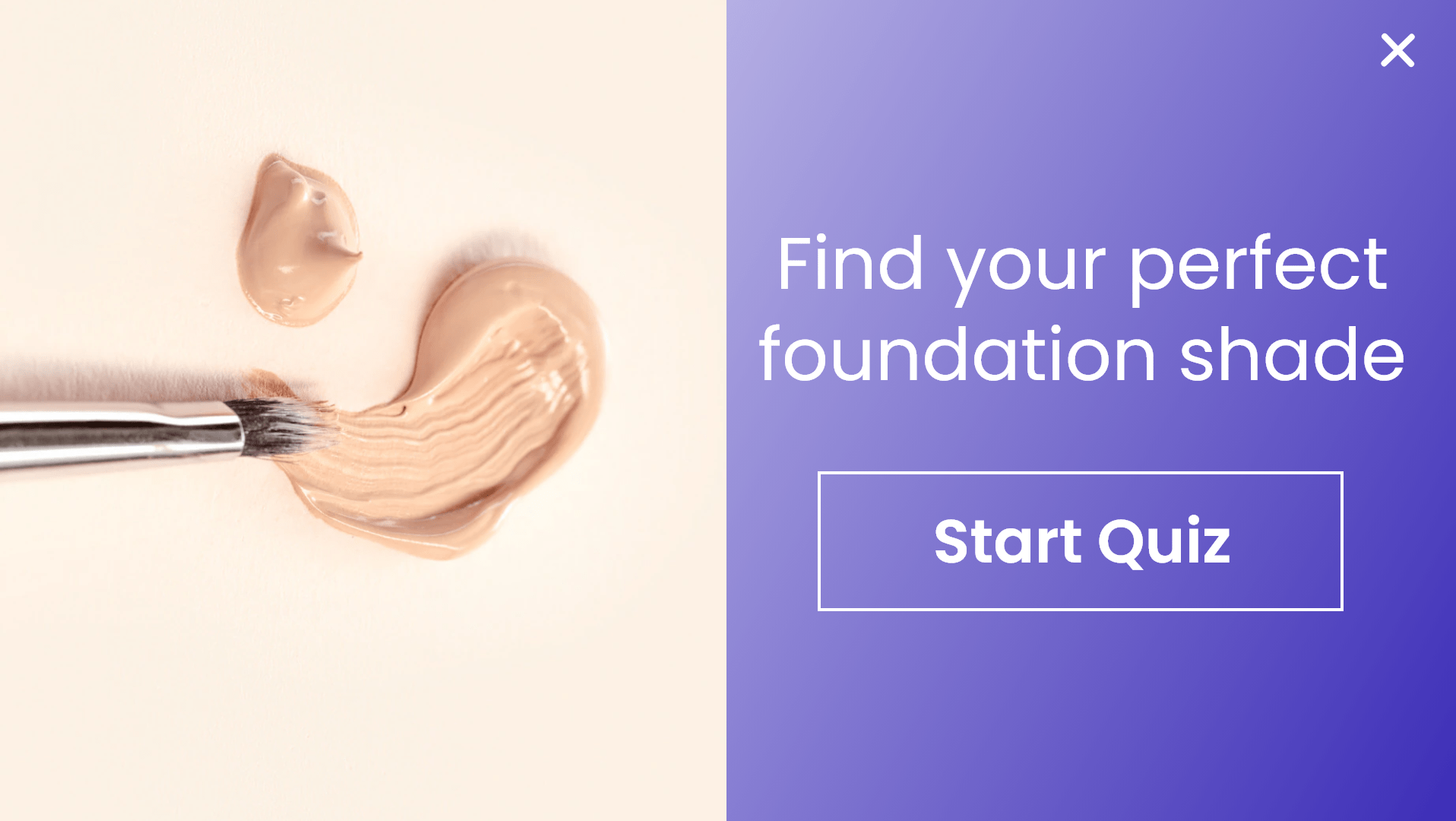
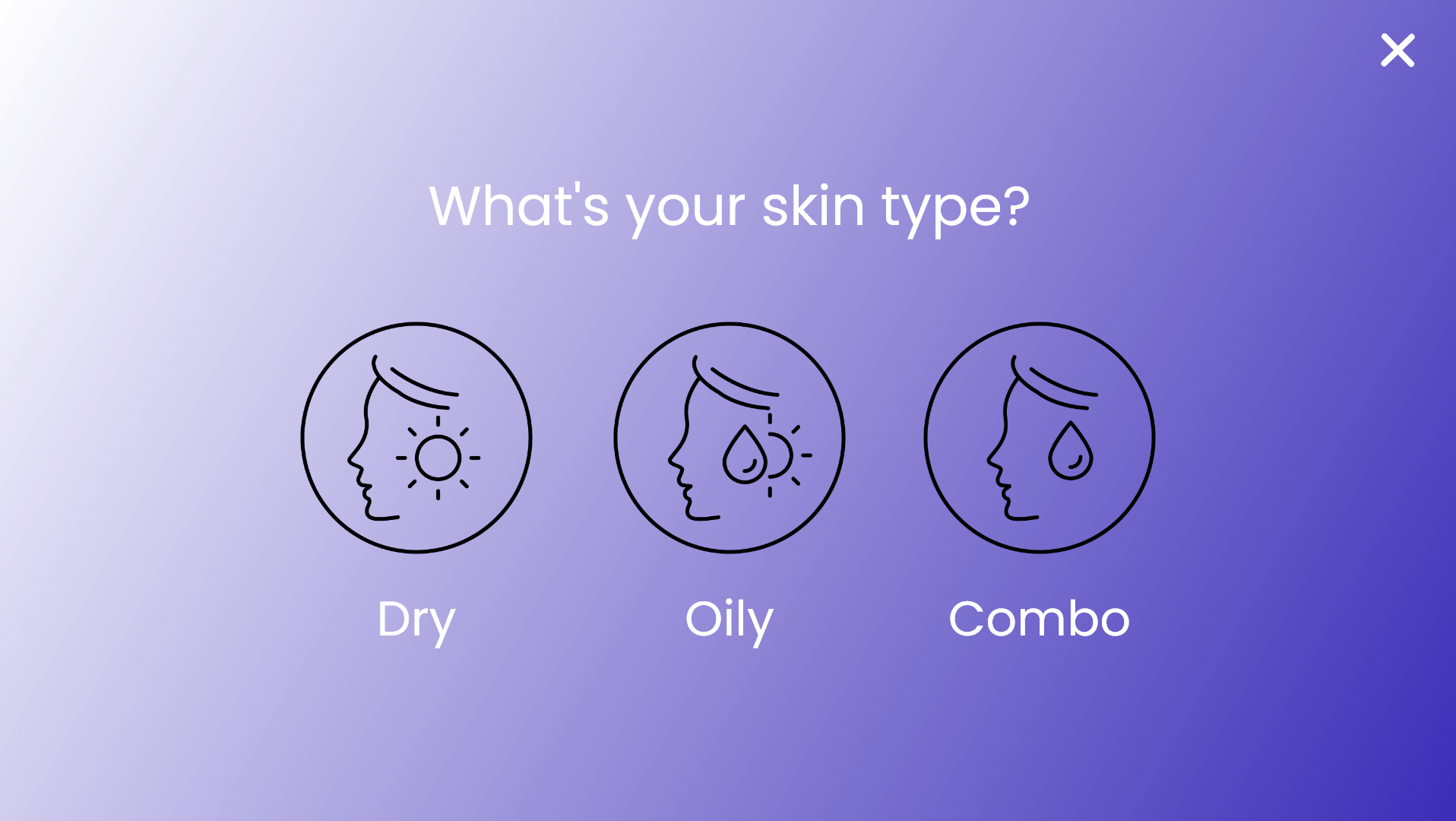
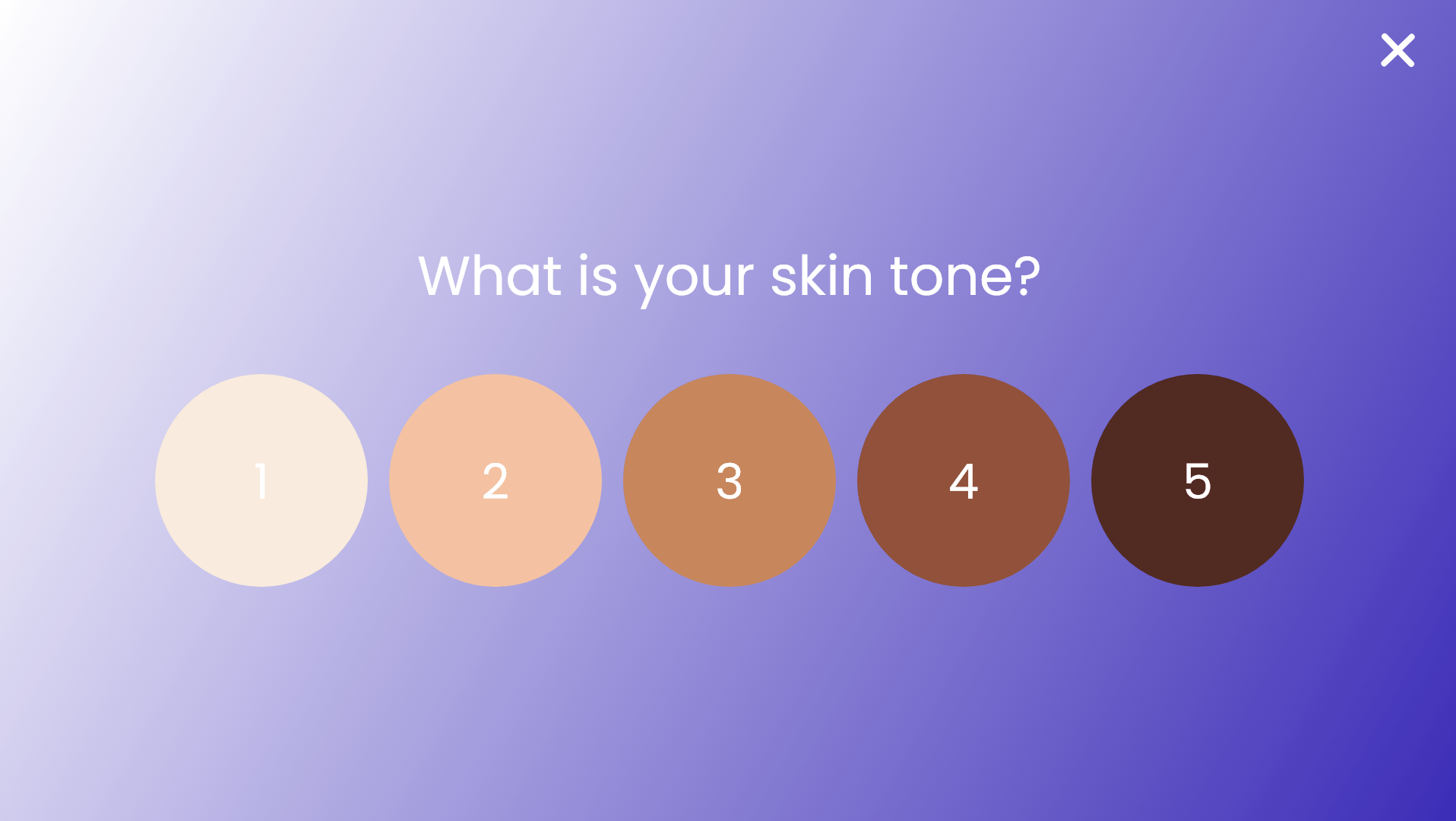


By pointing your shoppers to the right product, product quizzes help Shopify and Shopify Plus merchants drive more sales.
How to Make a Quiz on Shopify
The good news: you don’t have to build your quiz in-house. There are plenty of solutions available to help you create a Shopify quiz.
The bad news: there are almost too many to choose from. In fact, with all the Shopify quiz options available, you practically need a product recommendation quiz for product recommendation quizzes!
But like most marketing technology, the right quiz solution for you depends on your existing technology, required features, and the level of advanced capabilities desired. For example, take a look at this quiz below.

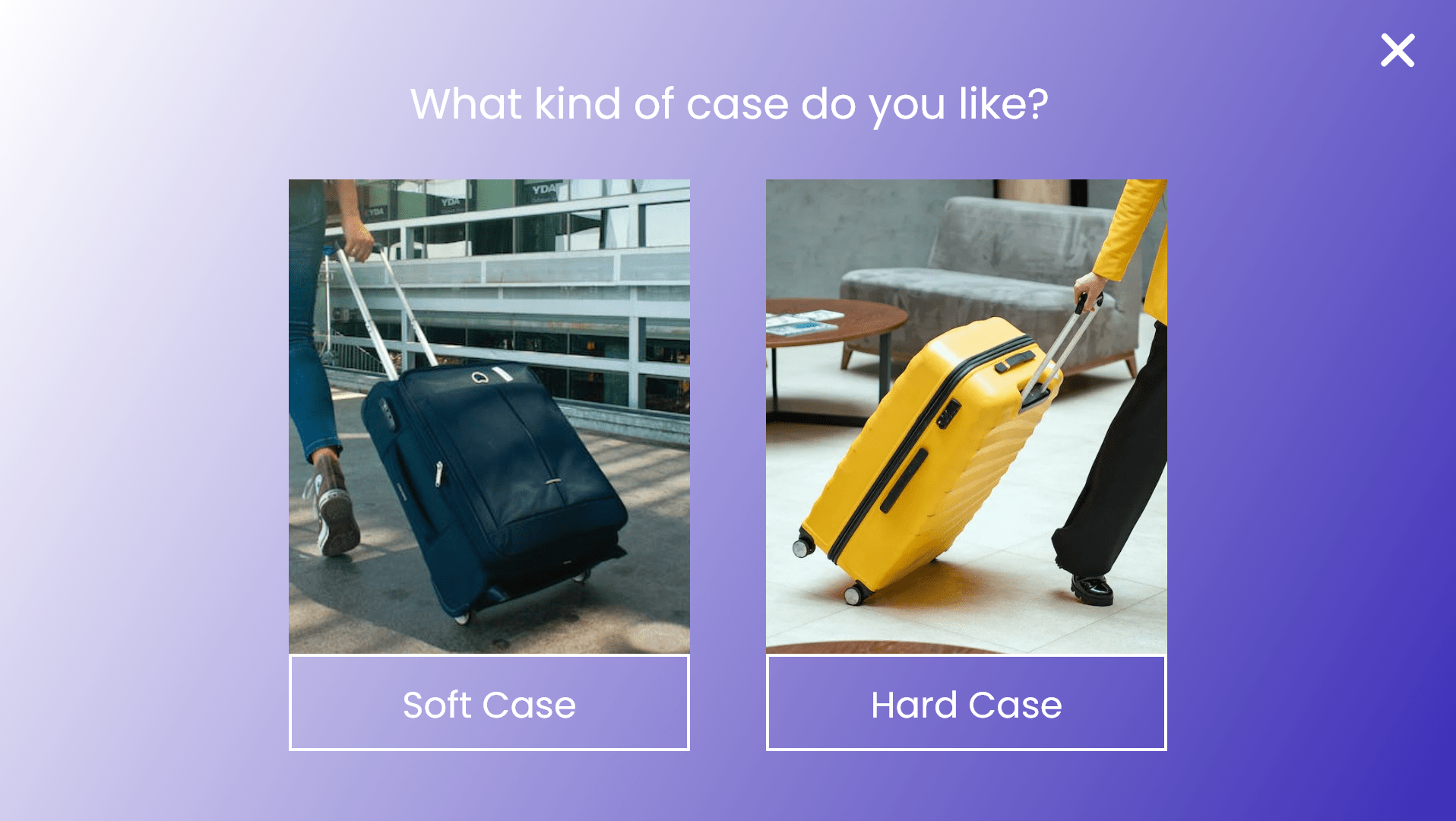


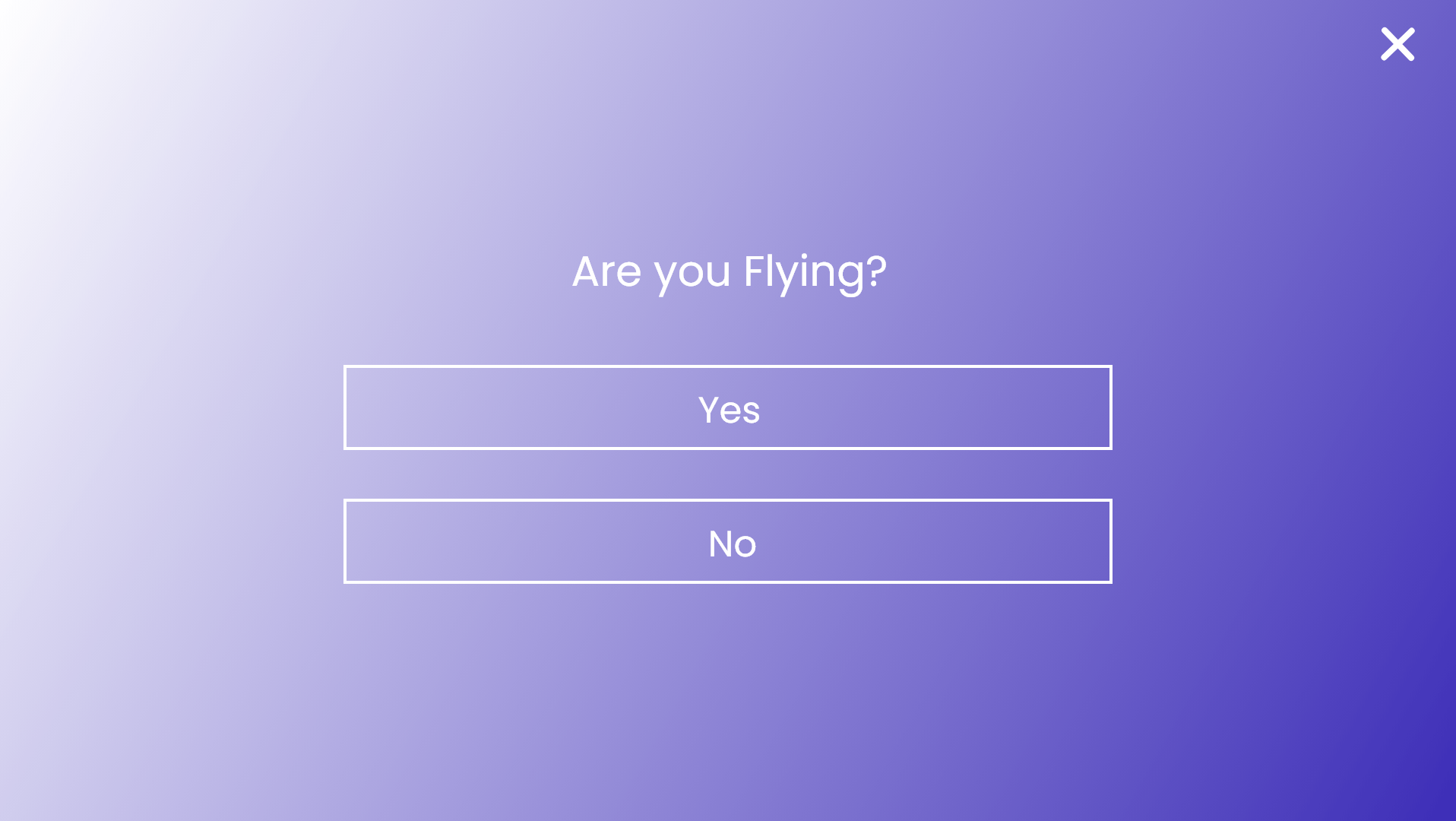


Notice that many of the pages in this quiz have unique designs. Some have Yes/No questions with basic text-only buttons, while others allow you to choose from up to 5 image-based options.
This luggage quiz would require a variety of styling options and question inputs, as well as the ability to recommend products based on these more complex inputs. Now, let’s get a bit fancier. Say you want to create a quiz that recommends the perfect jacket. Not only do you have to get the style right, but you also need to provide the right size. On the final screen, the quiz below shows the recommended jacket, and it also populates the size dynamically.

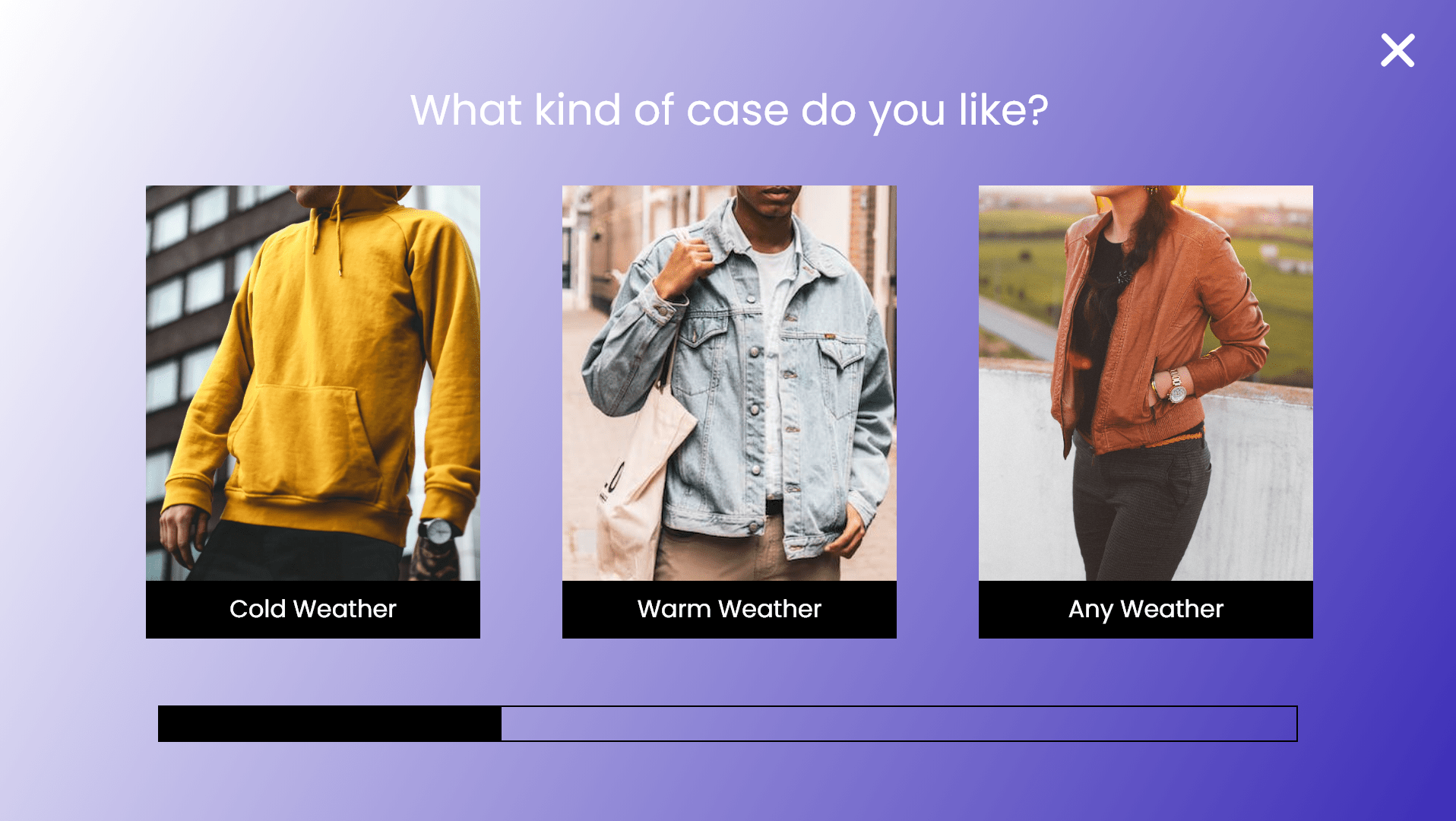
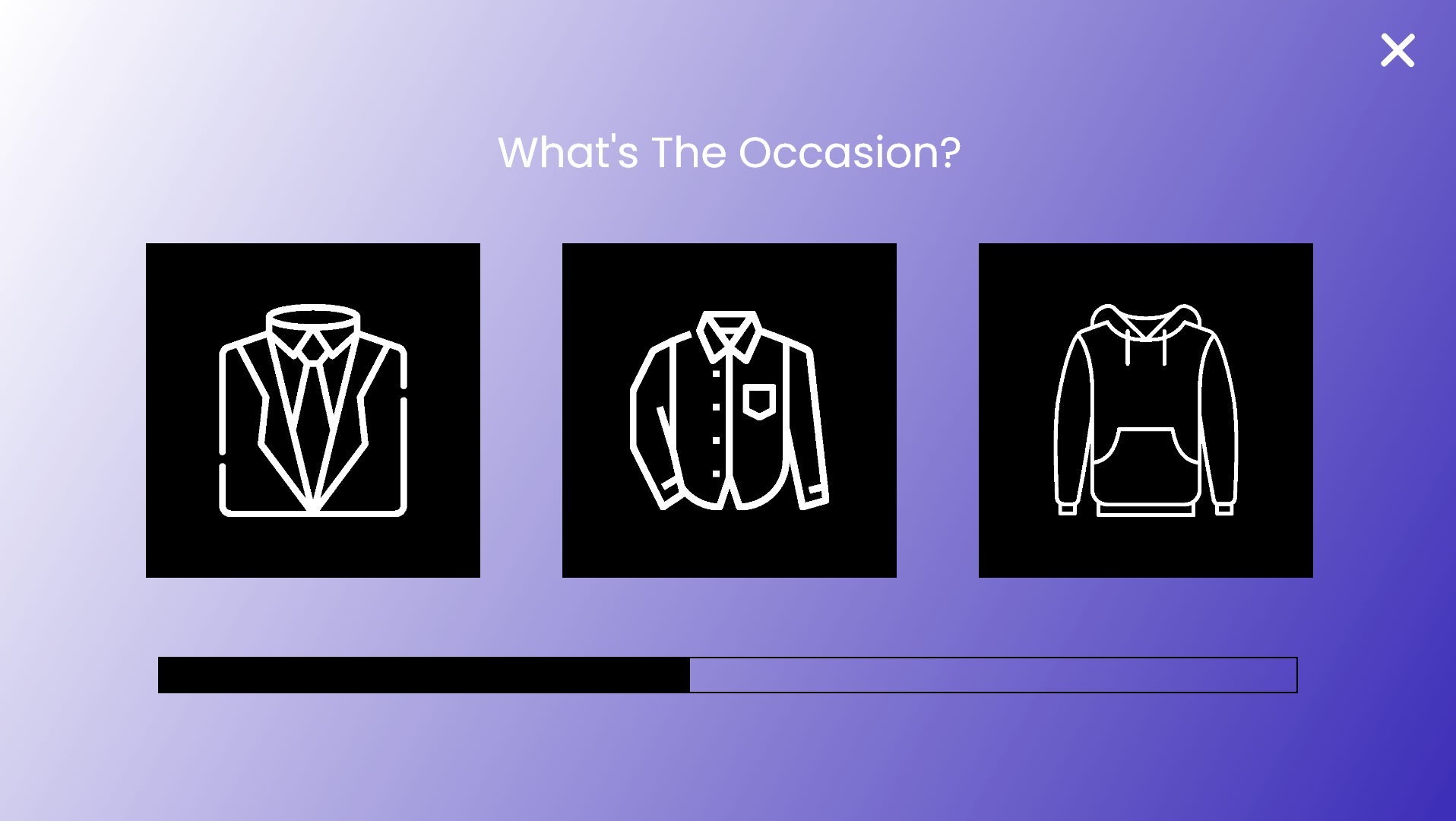
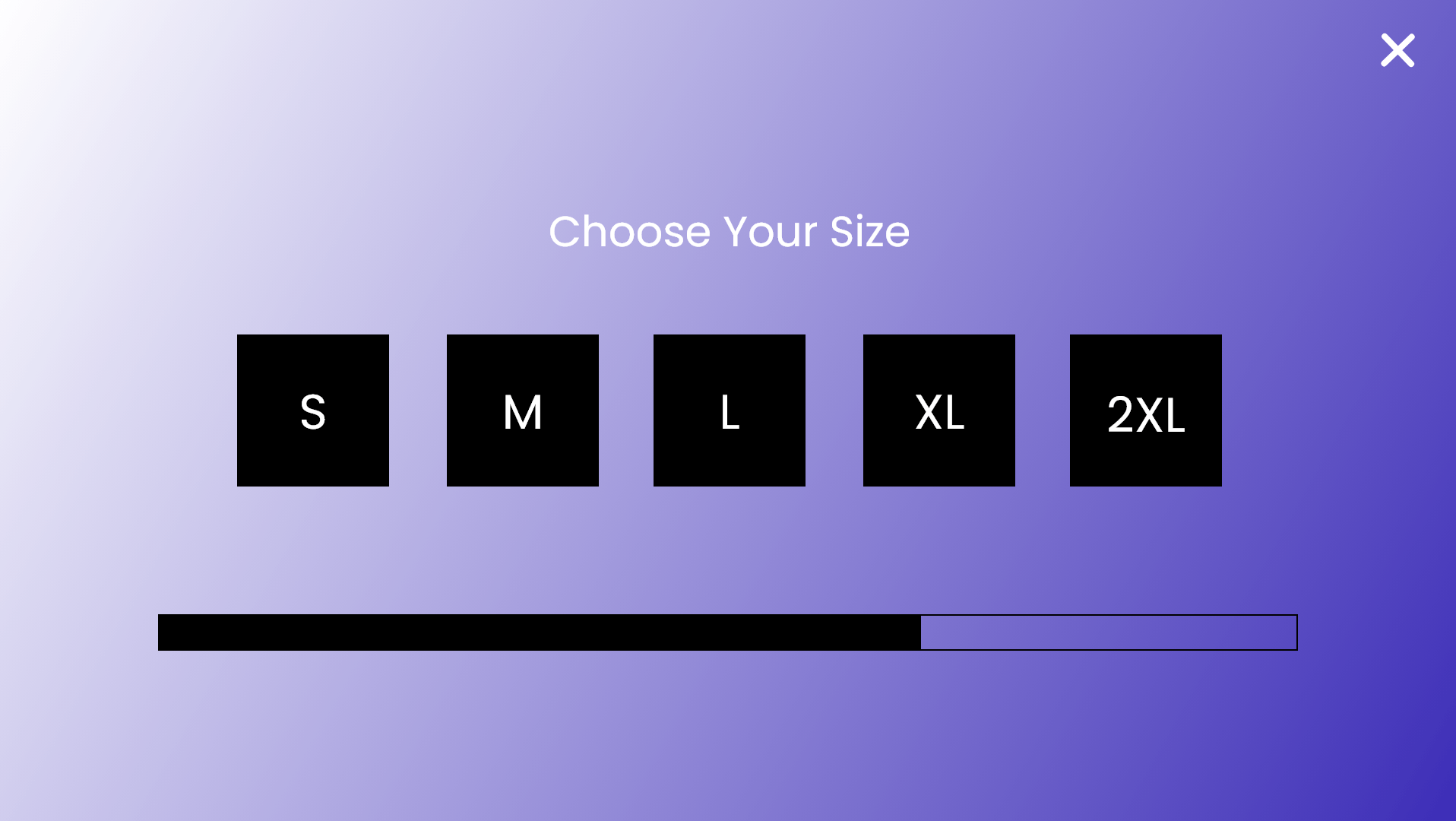
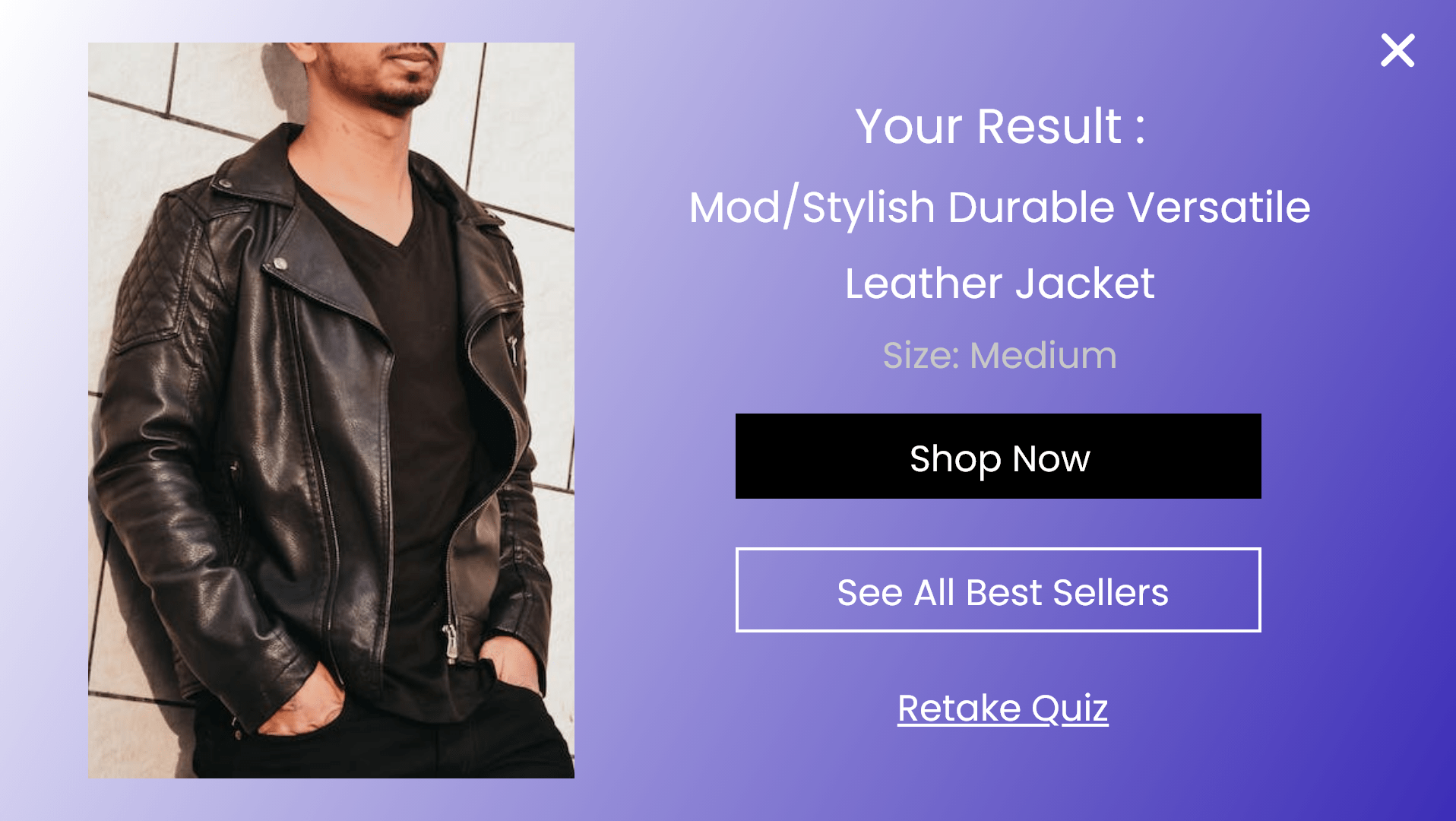
If you look at the bottom of the quiz, it also shows a progress bar.
What's the best Shopify quiz app for you?
- Compatibility with your eCommerce solution. In this case, you’re probably using Shopify or Shopify VIP. Either way, you need a Shopify quiz app or a quiz solution that integrates with Shopify.
- A focus on eCommerce. There are many types of marketing quizzes that brands use to capture leads. If you plan on using more than one type on your site, such as trivia or personality quizzes, you need a quiz builder that can handle each type. However, if you want to focus on product recommendations, look for a solution with proven eCommerce expertise.
- Integrations with your ESP(Email service providers), CDP (Customer data platforms), analytics, or another marketing tech. To get the most out of your product quizzes, you need to use the data they provide in your marketing efforts. However, you can’t do that if your quizzes don’t share the data with your stack! Look for quiz apps that can seamlessly pass quiz results, emails, mobile numbers, and other data to your existing technology for more personalized messaging.
- Quiz form factors. Do you want to create an embedded quiz, or do you want your quiz to appear in a pop-up on your site? Will it be a lightbox-style pop-up, or should your quiz slide out in a pop-up on the side of your site? No matter how you choose to deploy your quiz, make sure your quiz app can accommodate your approach.
- Flexible design options. If you don’t mind a cookie-cutter quiz, almost any basic quiz app can do the job. However, mid-level or larger stores will likely need the flexibility to create an on-brand quiz that matches its surrounding site. Look for quiz builders with a drag-and-drop editor and customizable templates to help you get started. If you need additional help, some quiz solutions can also provide design services.
- Question logic and user inputs. This is where the product recommendation magic happens, so it’s important to choose a quiz app that won’t constrain you. That shouldn’t be a problem if you have a limited product catalogue or only need basic recommendation logic. For more complex recommendations, look for quiz apps that offer weighted questions, question branching, a choice of user inputs, the ability to recommend multiple products at a time, or other advanced features.
- Advanced customization. Can you choose whether you can provide results in exchange for an email or SMS? Can you make that email capture optional or required? Does the app have a deep integration with Shopify that allows you to add an automatic “add to cart” button to the results screen? Can you include a progress bar or “retake quiz” button at the end? Oh, and does that quiz app allow further personalization and targeting with Liquid tags? There are tons of ways to customize your product quizzes; make sure the app you choose supports the ones you can’t live without.
- Additional conversion features. While quizzes are a great way to drive sales, quizzes are just one tool in your conversion rate optimization toolkit. For your quizzes to drive the most sales, look for a quiz app that allows you to do things like easily incorporate Shopify discount codes, show targeted messaging based on a visitor’s quiz results, or display teaser pop-ups that promote your quiz to site visitors.
9 Tips for Building a Great Shopify Product Quiz:
1) Get more quiz takers with a pop-up teaser.
Product quizzes are great for engaging new visitors right away, but only if they see your quiz. If you only link Shopify quizzes in your navigation bar or a button on your site, you’re missing out on quiz conversions (and revenue).
To make sure you catch every new visitor, promote your quiz with a pop-up CTA. These calls-to-action grab visitor attention by popping up in front of the visitor. If you offer a discount to quiz takers, be sure to mention that in your pop-up!
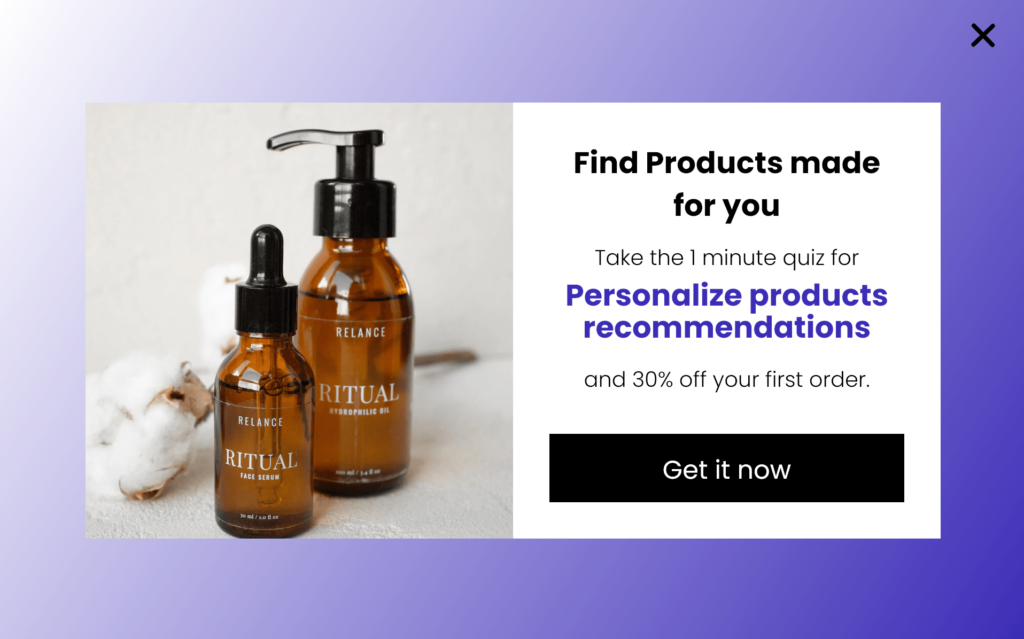
Serum uses Quizify: Quiz builder to connect their Shopify customers with the perfect products. With a quiz pop-up that offers a discount, they maximize quiz completions.
2) Reduce quiz drop-off with a progress bar.
While product quizzes aren’t as prone to form abandonment as standard long input forms, some quiz-takers will inevitably drop off without completing the quiz. Websites commonly use progress bars to prevent users from abandoning multi-step forms, and you can borrow this tactic to reduce dropoff in your Shopify quizzes too.
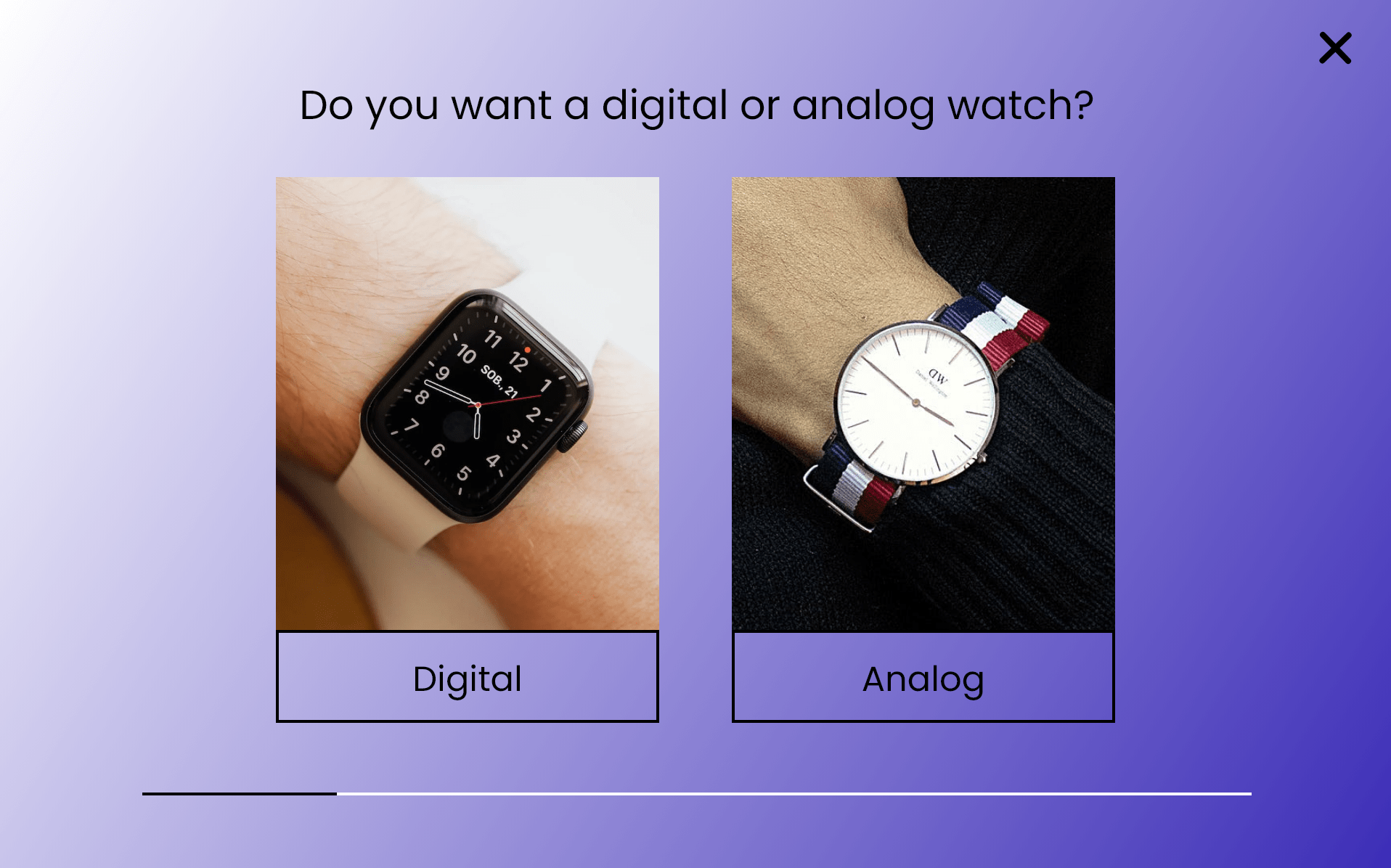
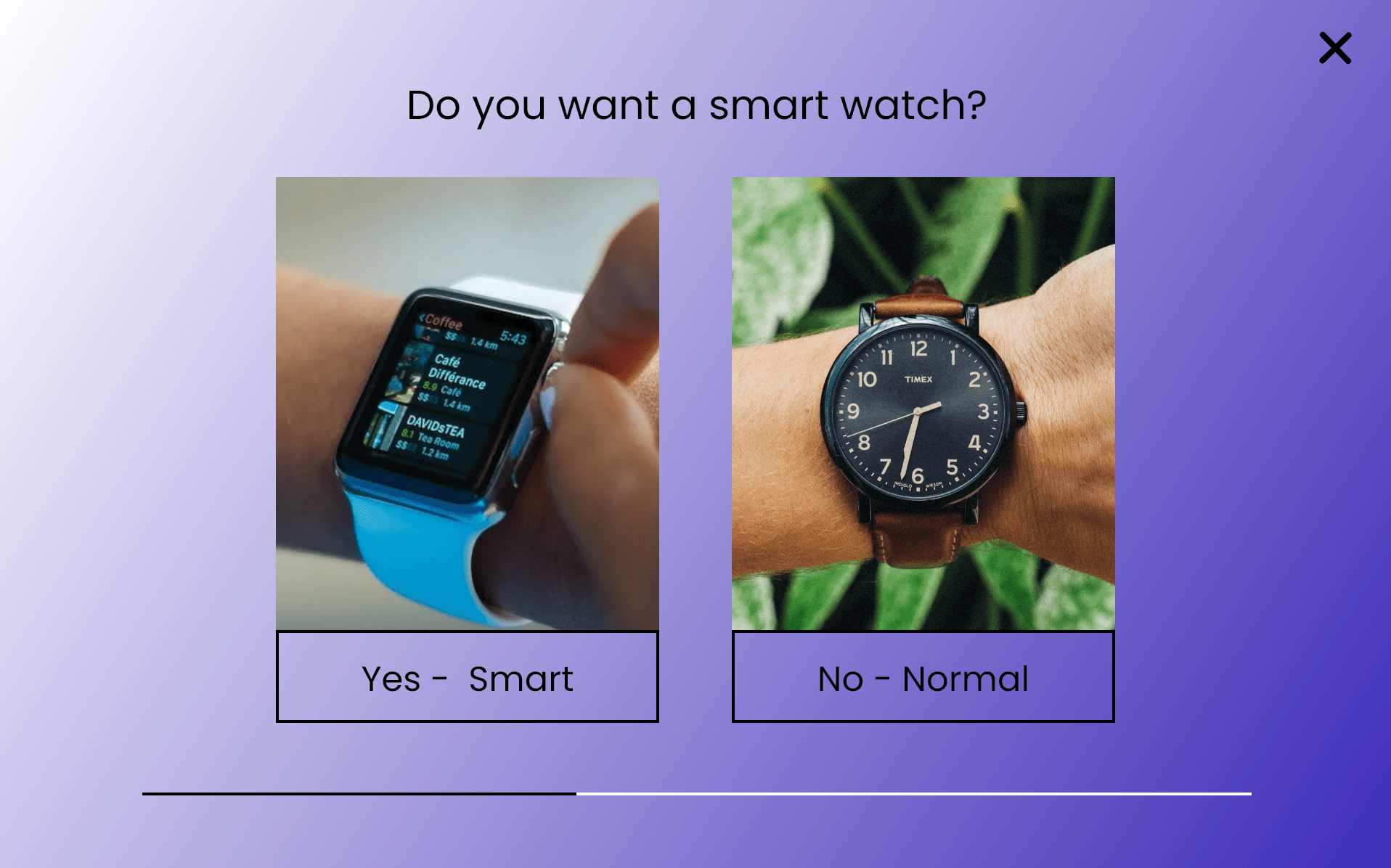

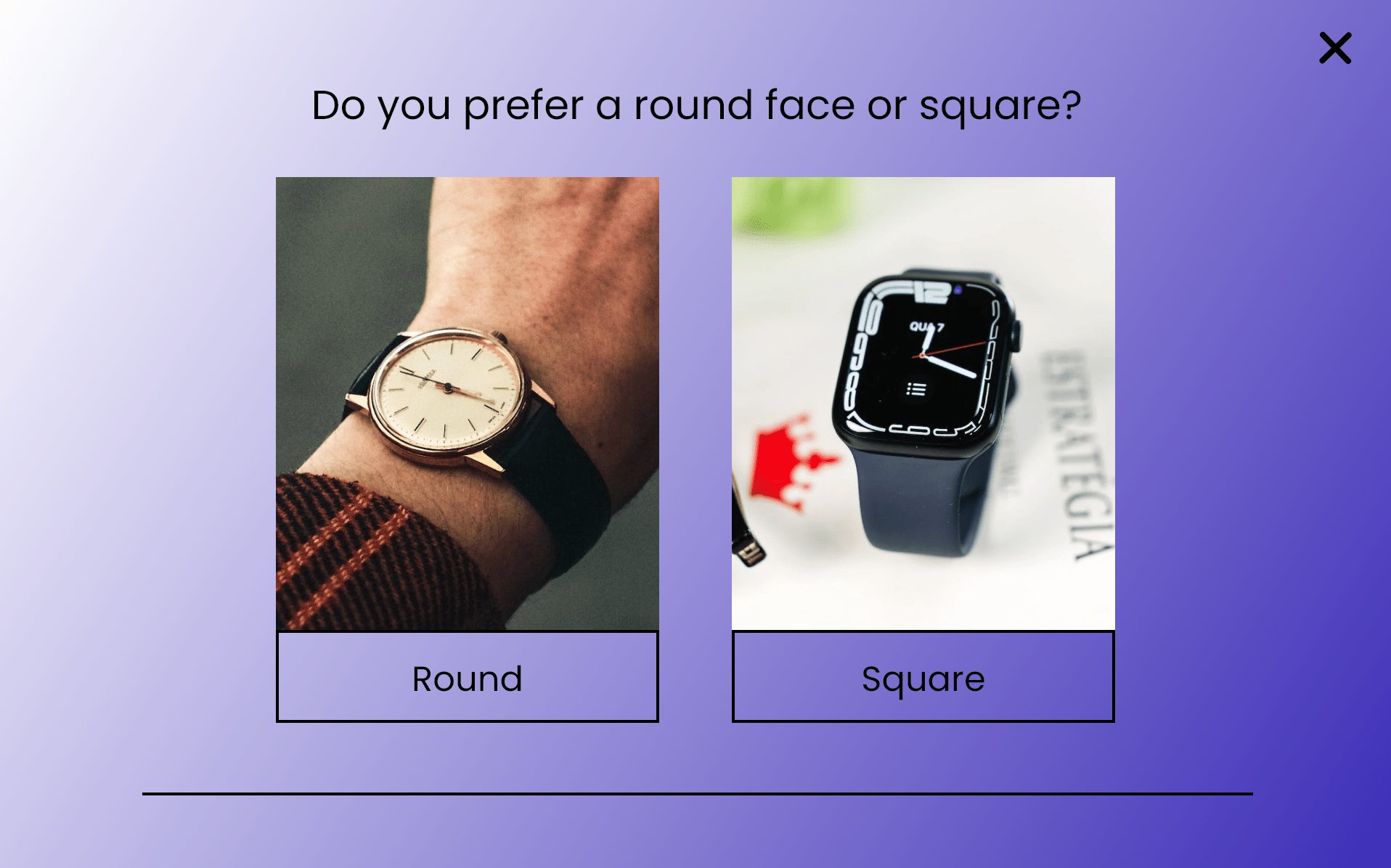
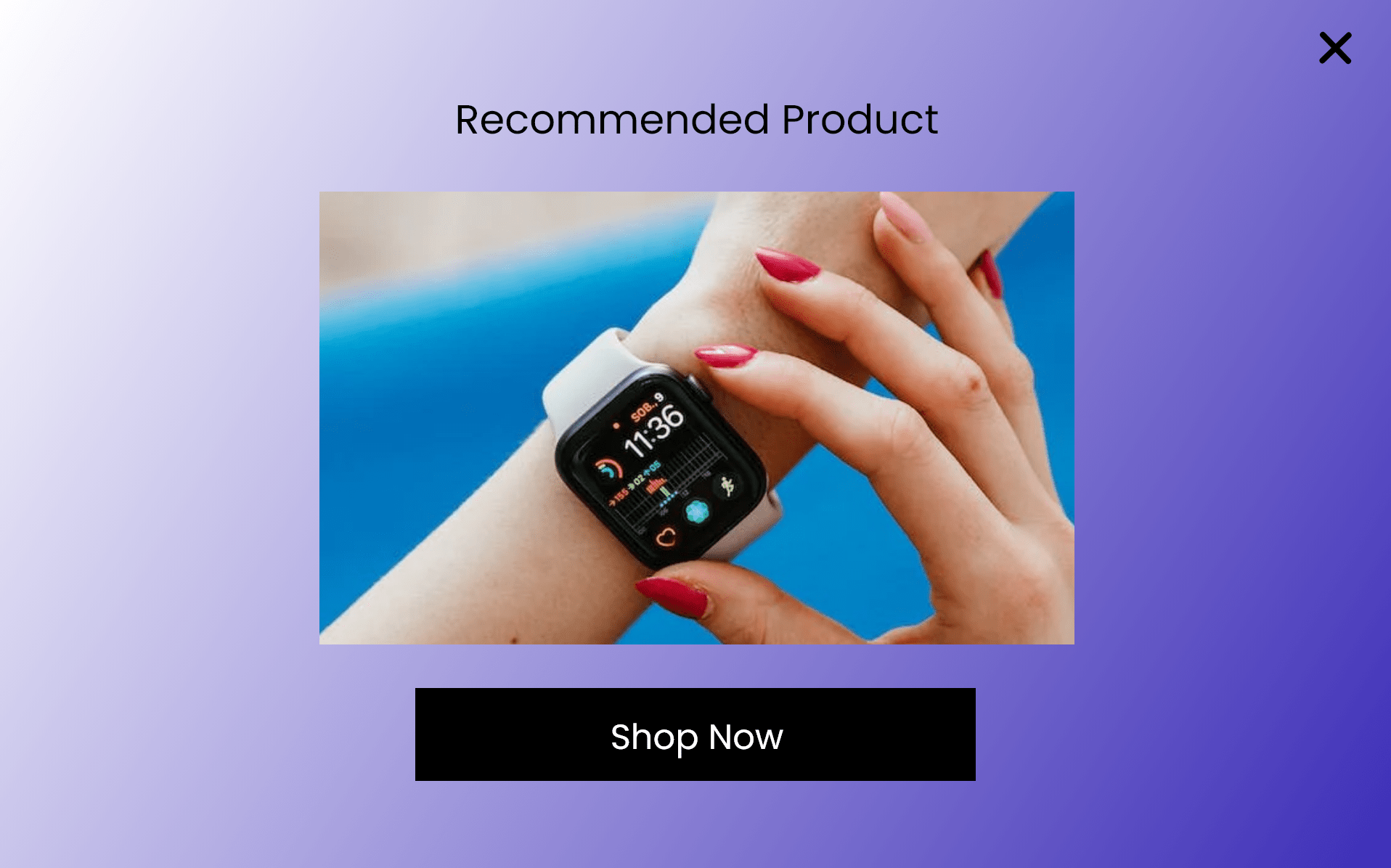
The progress bar at the bottom of this wristwatch Shopify quiz allows visitors to check their position in the quiz.
These bars provide subtle feedback based on user interaction, reminding visitors of how much of the process they’ve completed and how far they have to go. Not only does this make for a better user experience, but it also makes use of psychology and gamification to increase the likelihood that visitors will complete the form
While a sense of incompleteness can lead to stress, completing a task, however small, can feel quite rewarding. By allowing visitors to see their progress, you may improve your chances of conversion.
3) Include a “retake quiz” button on the last page of your quiz.
The option to take the quiz again might seem small, but this small user experience tweak can go a long way to keep visitors on your site.
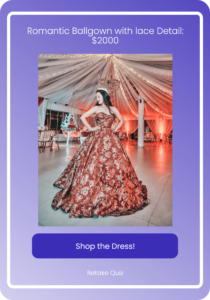
The “retake quiz” link on this product quiz for wedding dresses can help keep visitors, well, engaged.
Some visitors may want to keep taking the quiz, whether because they weren’t sold on the first recommendation, or even just out of curiosity. Providing an easy way to go through the quiz again keeps visitors engaged, shows off more of your products, and increases the odds that visitors see a product to purchase.
4) Make sure your quiz is mobile-friendly.
It’s old news, but it’s worth repeating: most people browse the web on mobile devices at least part of the time. Don’t leave your mobile shoppers out!
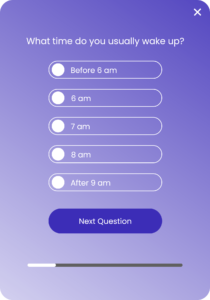
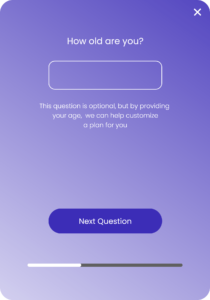

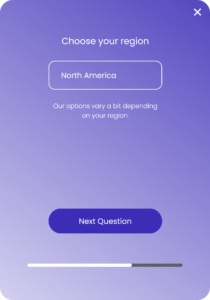
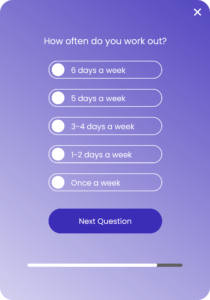


This responsive quiz is optimized to look great on mobile devices.
If you create a full-page or embedded quiz, make sure your page is responsively designed and allows visitors to answer quiz questions comfortably. On the other hand, if you choose to launch your quiz in a modal or lightbox, make sure you create mobile-friendly pop-ups that adheres to Google’s guidelines for mobile interstitials.
For an optimal mobile experience, create separate versions of your quiz for desktop and mobile, then use device targeting to show the right quiz for each visitor. It may take some extra work, but for some merchants, the increase in conversions may be more than worth the effort.
5) Increase sales by including a one-click “add to cart” button in your quiz.
Imagine a visitor who comes to your site, takes the quiz, receives a product recommendation, and is ready to buy. Now what? At the very least, the final recommendation screen on your quiz should link to the product page. But if your quiz app allows it, you can go one step further and include a one-click “add to cart” button on your recommendation page.

A Mockup recommendation quiz with a one-click “add to cart” button.
With a one-click way to add recommended items to the cart, you reduce friction in the buying process, making it more likely that quizzes result in a purchase.
6) Incentivize purchases with Shopify discount codes.
Even the perfect product recommendation won’t convince every shopper to purchase right away. If quiz-takers are on the fence, incentivize them to complete the purchase by throwing in a discount code for their recommended product at the end of your quiz.

This product quiz has a placeholder that shows a unique, one-time-use coupon code to each visitor who completes the quiz.
For visitors who provide their email address or mobile number in exchange for their quiz results, send this coupon code in a follow-up email as well. This makes it easy for shoppers who are still weighing their options to come back and purchase later.
7) Target visitors based on their product quiz preferences.
Quizify: Quiz builder provide you with a wealth of first- and zero-party data. With the right tools, you can use this data to target shoppers across channels.
Let’s say your Shopify store has a quiz to match people with the right mattress based on how they sleep.
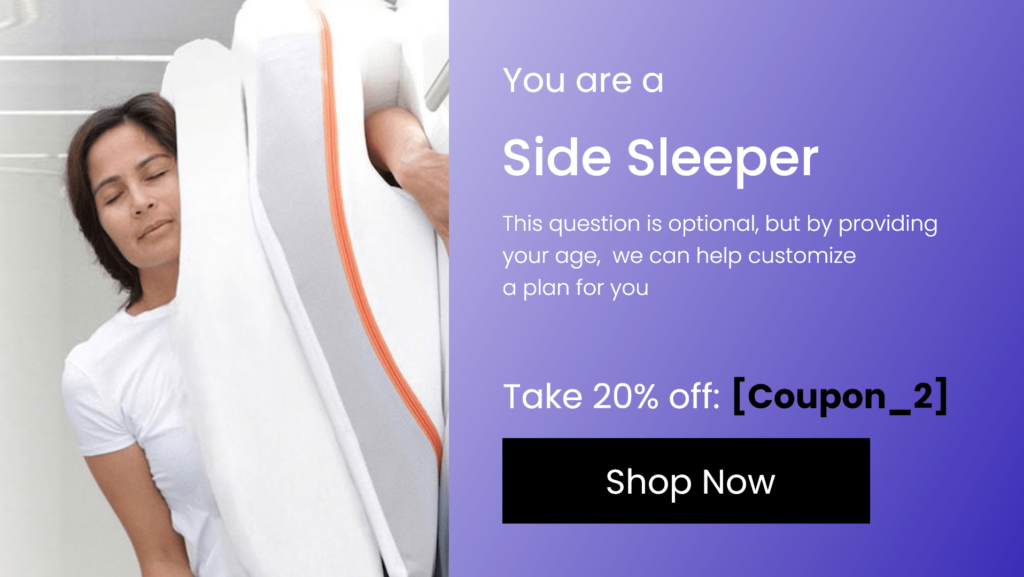
If quiz-takers leave your site and come back later, you can greet them with some targeted messaging based on their quiz results.
8) Promote quizzes across email, social media, or paid advertising.
When you’ve created a great quiz, don’t wait for shoppers to come to your site; go where your shoppers are! Show off your quiz on multiple channels to get the most return from your quiz investment.
For instance, create an email campaign to promote your quiz to subscribers who have never purchased it or customers who have previously purchased similar products. Or, take your quiz to social media. With their high engagement and conversion rates, Shopify quizzes are perfect for turning passive social audiences into customers, both with organic content and in paid advertising campaigns.
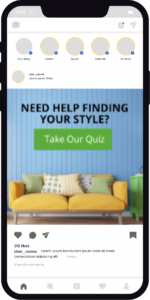
In fact, if you have a paid social strategy, promoting your quiz is a must! With the high engagement and lead capture rates of product quizzes, they’re almost certain to increase your return on ad spend.
9) Make sure you can attribute revenue to your quizzes.
Finally, to round out your product recommendation quiz strategy, make sure you have the data you need to report on the returns earned from quizzes.
For instance, Quizify: Quiz builder can pass data to Google Analytics, allowing businesses to attribute revenue to quiz completions. This can help identify opportunities to improve or expand your quiz efforts.
After all, conversions are great, but the real goal is revenue. When you have the right data, you can make informed decisions about tweaking paid advertising campaigns for quizzes, creating additional product finder quizzes for your other store categories, or making other changes to your quiz strategy.
Ready to Add a Quiz to Your Shopify Store?
For online stores looking to grow revenue with the advanced quiz conversion tactics listed here, Quizify: Quiz Builder app makes it easy to add quizzes, pop-up forms and surveys to your store.

quiz builder also integrates with Klaviyo, Google Analytics, Mailchimp, Omnisend, active campaign and other marketing tools, helping you grow your list and put your quiz data to use in targeted marketing campaigns across channels.
To learn more about Quizify: quiz builder solution, or our other tools for eCommerce conversion, talk to us!

